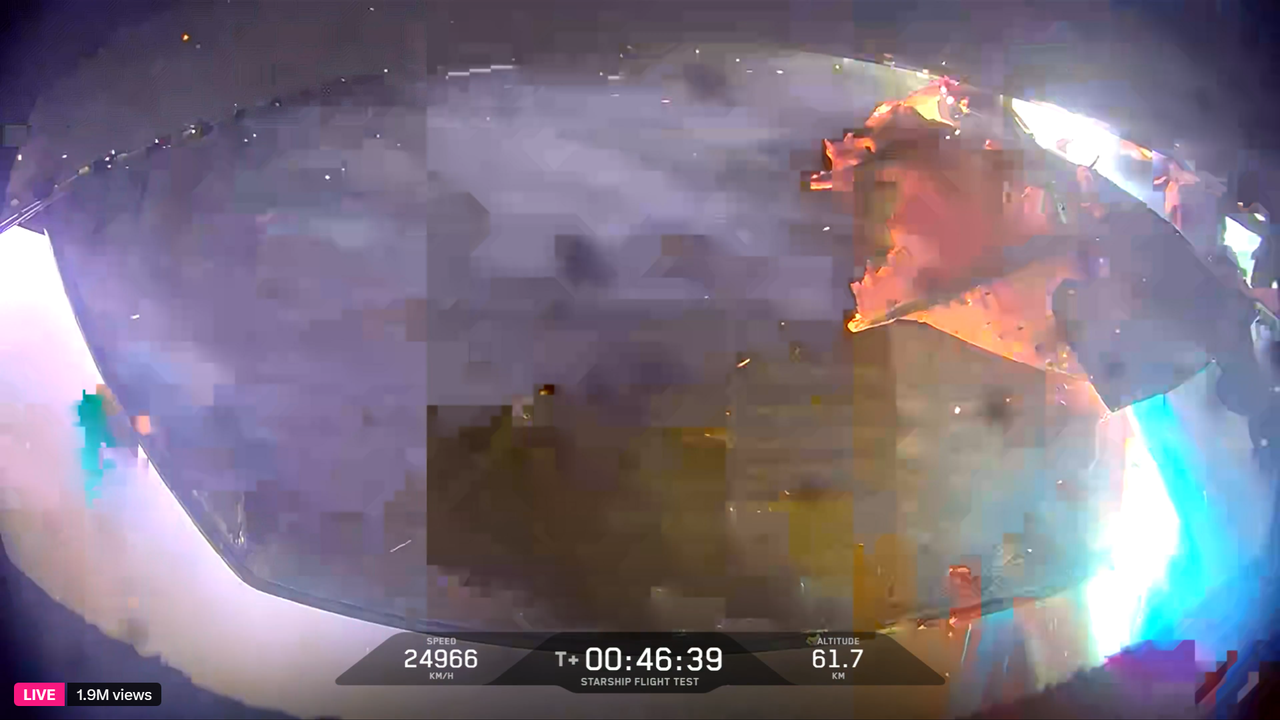Science
SpaceX Secures FAA Approval for Starship Flight 10 After Investigation

The U.S. Federal Aviation Administration (FAA) has concluded its investigation into the recent failures of SpaceX’s Starship program, paving the way for Starship Flight Test 10 to launch this weekend. The FAA’s decision comes after an extensive review of the mishaps that occurred during the spring, notably the loss of both the Super Heavy booster and the Ship upper stage during the May 27 launch from SpaceX’s South Texas facility.
In its investigation, SpaceX, alongside oversight from the FAA and support from organizations such as the U.S. Space Force, NASA, and the National Transportation Safety Board, identified separate structural issues in the vehicle’s stages as the cause of the failures. According to a recent statement from SpaceX, the investigation also examined an explosion on June 18 that destroyed Ship 36 during ground testing at Starbase.
Flight 9 was the third Starship launch of 2025, but all three missions failed to achieve their primary objectives. The earlier Flight 7 and Flight 8, which took place in January and March, respectively, ended in explosions over the Atlantic Ocean, visible from Florida and the Bahamas.
Details of Recent Failures and Future Modifications
The launch of Flight 9 had begun successfully, marking the first reuse of a Super Heavy booster, known as Booster 14. The booster achieved hot-stage separation from the Ship, but it later exploded approximately 1 kilometer above the Gulf of Mexico after relighting 12 of its 13 engines during its descent. SpaceX attributed this failure to increased descent forces that ruptured an internal propellant line, igniting the liquid oxygen and methane fuels.
To improve future missions, SpaceX plans to decrease the angle of attack during booster descents to minimize stress. Additionally, the company will redesign the grid fins on Super Heavy boosters, transitioning from four to three larger aerodynamic control surfaces. This change aims to enhance the boosters’ trajectories and accommodate steeper angles of attack.
After separating from Booster 14, the upper stage, referred to as Ship 35, began its first planned engine burn. However, sensors detected a methane leak in the nosecone, which destabilized the vehicle’s attitude control. Although it completed the ascent burn, the leak led to a full venting of fuel, causing Ship 35 to reenter Earth’s atmosphere in an uncontrolled manner. SpaceX lost communications with the vehicle 46 minutes into the flight as it descended over the Indian Ocean.
Investigators traced the issues with Ship 35 to a gas diffuser failure, which compromised the main fuel tank’s pressurization. SpaceX has since implemented updated versions of the gas diffuser that have passed rigorous testing.
Just weeks after the incident with Ship 35, Ship 36 was destroyed during ground testing due to a failure in a composite overwrapped pressure vessel (COPV) used for storing nitrogen. This failure, attributed to undetected damage, resulted in a propellant leak and explosion during cryogenic fuel loading.
In response to these setbacks, SpaceX has reduced the operating pressure for COPVs and introduced new inspection procedures, including a non-destructive evaluation method to detect internal damage.
Next Steps for SpaceX and NASA’s Lunar Mission
As SpaceX prepares for Flight 10, which is scheduled for launch during a window that opens on August 24 at 19:30 EDT (23:30 GMT), the company emphasizes the importance of lessons learned from past failures. According to SpaceX, every experience contributes to the design of the next generation of Starship and Super Heavy.
The upcoming tests, including Flight 10 and Flight 11, are crucial for meeting the timeline for NASA’s Artemis 3 mission. NASA has selected Starship as the lunar lander for this mission, which aims to return astronauts to the Moon for the first time since the final Apollo mission in 1972. Currently, NASA is targeting a launch date in 2027, and any delays in Starship’s development could pose challenges to this ambitious timeline.
In a statement released on August 15, the FAA confirmed that it accepted the findings of SpaceX’s investigation and reported no injuries or damage resulting from the losses during Flight 9. With the FAA’s clearance, SpaceX is now set to proceed with the launch operations for Flight 10. The mission will be streamed live on the SpaceX website and its social media accounts, providing the public with an opportunity to witness this significant step in the ongoing development of the Starship program.
-

 Technology5 months ago
Technology5 months agoDiscover the Top 10 Calorie Counting Apps of 2025
-

 Health3 months ago
Health3 months agoBella Hadid Shares Health Update After Treatment for Lyme Disease
-

 Health3 months ago
Health3 months agoErin Bates Shares Recovery Update Following Sepsis Complications
-

 Technology4 months ago
Technology4 months agoDiscover How to Reverse Image Search Using ChatGPT Effortlessly
-

 Technology1 month ago
Technology1 month agoDiscover 2025’s Top GPUs for Exceptional 4K Gaming Performance
-

 Technology3 months ago
Technology3 months agoElectric Moto Influencer Surronster Arrested in Tijuana
-

 Technology5 months ago
Technology5 months agoMeta Initiates $60B AI Data Center Expansion, Starting in Ohio
-

 Technology5 months ago
Technology5 months agoRecovering a Suspended TikTok Account: A Step-by-Step Guide
-

 Health4 months ago
Health4 months agoTested: Rab Firewall Mountain Jacket Survives Harsh Conditions
-

 Lifestyle5 months ago
Lifestyle5 months agoBelton Family Reunites After Daughter Survives Hill Country Floods
-

 Health3 months ago
Health3 months agoAnalysts Project Stronger Growth for Apple’s iPhone 17 Lineup
-

 Technology4 months ago
Technology4 months agoHarmonic Launches AI Chatbot App to Transform Mathematical Reasoning





















